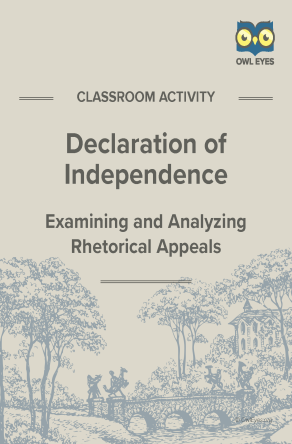 The Declaration of Independence Rhetorical Appeals Activity" />
The Declaration of Independence Rhetorical Appeals Activity" /> The Declaration of Independence Rhetorical Appeals Activity" />
The Declaration of Independence Rhetorical Appeals Activity" />
Primarily penned by Thomas Jefferson, the Declaration of Independence was brought before the Continental Congress on July 4th, 1776, and signed by representatives of the thirteen colonies. The document, announcing the separation of the United States from Great Britain, represents a turning point in the Revolutionary War and the birth of American democracy. It is a rhetorically powerful piece, employing ethos, pathos, and logos to convey the United States’s case for political independence.
Skills: analysis, close reading, drawing inferences from text, examining the impact of diction on audience
The Owl Eyes Rhetorical Appeals activity gives students an opportunity to practice examining and analyzing the Aristotelian rhetorical appeals: ethos, pathos, and logos. Students will analyze selected rhetorical appeals from the text to determine which appeal they best represent and explain the appeal’s impact. The main components include the following:
In completing this worksheet, students will be able to examine and analyze Aristotle’s three rhetorical appeals in order to evaluate works of rhetoric and the techniques they employ.